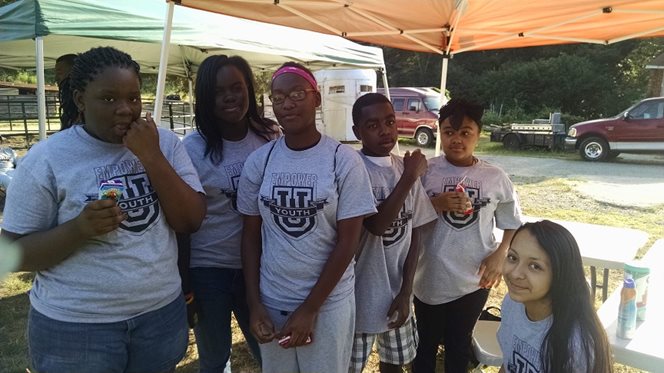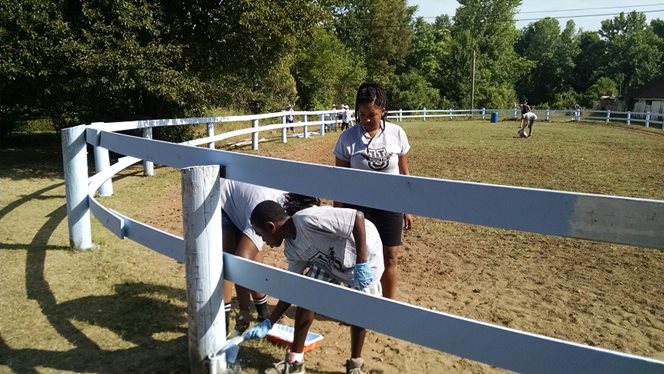Youth involvement is a “holy grail” in community development. After all, youth are the next generation of renters, homebuyers and leaders. If disenfranchised, they also can destabilize a neighborhood, contributing to drug use and other negative dynamics.
Yet tapping into the energy and talents of youth can be particiularly challenging, because they are difficult to engage beyond their own immediate "universe." What are NeighborWorks network members doing to draw in this crucial age group, and what lessons are they learning? In this periodic series, we showcase some answers.
Targeting the ‘tipping point’ age
“We’ve worked for a long time to build the capacity of residents to lead, and that includes youth,” says Kim Graham, vice president for community engagement for the Charlotte-Mecklenburg Housing Partnership (CMHP) in North Carolina. “Most of our current leaders are seniors and they were really concerned about the lack of youth engagement, their seeming apathy. There had been a number of escalating problems like delinquency from school, vandalism, disrespectful behavior. So we all got together and brainstormed.” |
| The team from CMHP's Empower U |
The same concerns surfaced when CMHP conducted NeighborWorks America’s Community Impact Measurement (CIM) survey among the mostly black, low-income Druid Hills neighborhood (area median income: $17,000). One suggestion that emerged was to build a community center for youth activities. “But we knew a building wouldn’t change behavior, so we developed another, more immediate way to address the challenge”—Empower U: Youth.
Graham said the group chose to target their initial efforts on eighth graders, “because they are old enough to be aware of the larger world, but not yet in high school, when so many go into a ‘can’t be bothered’ mode and parents play a lesser role.”
West Side Neighborhood Housing Services in Buffalo, New York, has chosen to target the same age group for its youth programming for similar reasons. “There is a dangerous tendency to follow the crowd developing at that grade level,” says Debbie Lombardo, community outreach coordinator. “They can get swayed the wrong way, and we want to provide a positive, counter influence.”
CMPH and West Side chose slightly different, but similar strategies.
Let youth guide the way
With the help of a NeighborWorks America Impact Grant, CMHP partnered with the city government; an arts center; Druid Hills Academy—the local K-8 school; and Johnson C. Smith University, where one of the professors developed the curriculum for the nine-month, pilot youth-leadership program.Participants were chosen with the help of the school administration, based on criteria predictive of the best likelihood of success in cultivating a spirit of “community stewardship.” These included “at least a sliver of interest on the part of the parents” and few disciplinary referrals. Both the parents and the students were asked to sign a pledge of dedicated participation.
Held twice a month on Saturday mornings, each meeting focused on a different topic. For example, one session was titled, “Can you hear me now?” and helped participants identify what image they wanted to project to the world and how to find and reflect that “brand” in their voice.
Most sessions, held at one of CMHP’s senior apartment complexes or an SRO apartment building for the formerly homeless, featured small-group assignments and seniors who talked to the participants about the community’s history, what it takes to be an effective leader and the future of the neighborhood. Students also were required to attend at least one neighborhood association meeting. The entire program culminated in a community action project chosen by the youth themselves—in this case, the “sprucing up” of a historic, family-owned horse farm in the neighborhood. “Graduation” was held during the neighborhood’s annual National Night Out celebration event, attended by more than 300 residents and elected officials.
 |
| The CMHP Empower U team paints a fence for its community project at a horse farm. |
Meanwhile, West Side has started its programming on a smaller scale, through individual youth forums for seventh- and eighth-grade students. The idea for the forums was hatched at a NeighborWorks America Community Leadership Institute, and the first event was held at a community center for a Boys and Girls Club—from 11 a.m. until 2 p.m. on a Saturday. Topics covered included how to fight bullying, resist the urge to try opioids and other drugs, and identify and apply to first jobs. An interactive game, in which the adults participated as well, helped participants see the consequences of their decisions, such as living in neighborhoods that aren’t safe and not graduating from college.
“These were topics they told us they wanted to talk about,” says Lombardo. “That was the key to the whole thing –letting the kids set the agenda.”
CMHP and West Side offer these lessons learned:
- Youth and families are busy! There is a lot of competition from sports, cheerleading, etc. Adjust your expectations to reality and build relationships for the long haul. “It’s hard work to keep the students engaged,” Graham says. “We recruited 20, 11 actually attended some sessions and just nine or so attended consistently. But they completed their improvement projects and developed really positive relationships with the seniors in the community. In fact, the parents want the program to continue into high school, and one of them, along with her daughter, attended the most recent NeighborWorks’ Community Leadership Institute. Their trip was funded by NeighborWorks’ Catalytic Grant, which was awarded to assist with a broader neighborhood revitalization.
- Free food and school supplies are a draw. Offering free breakfast was a huge attraction at the CMHP events, says Graham, since many of the families in the target neighborhood are food-insecure. “The kids often took food home with them.” Likewise, Lombardo says backpacks and granola bars are a real hit.
- Listen more than talk. “Sometimes as adults we don’t listen as closely as we should. Let the kids talk,” advises Lombardo.
- Realize that “it’s all connected.” What may at first be perceived as a “youth issue,” is actually a reaction to their overall environment, notes Graham. “Give them the support and nurturing they need, and mischief goes down.”

